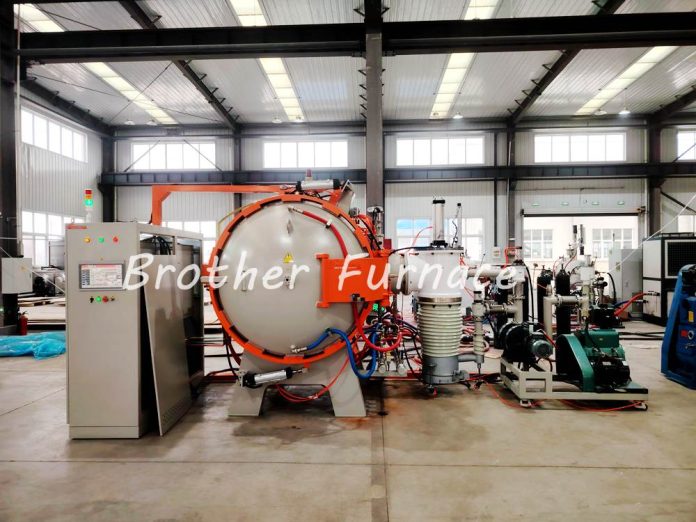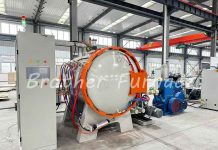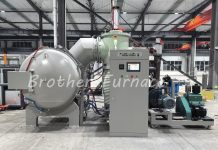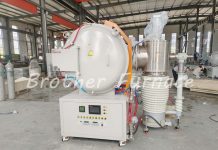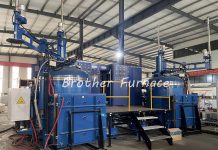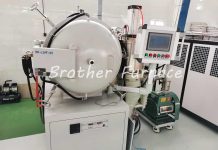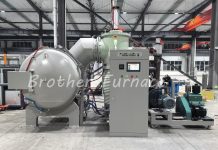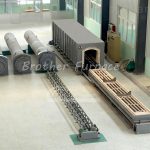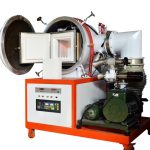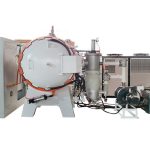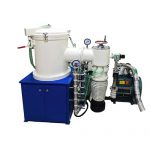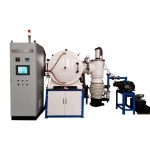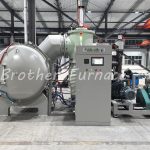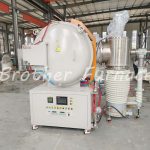Vacuum furnace technology plays a pivotal role in modern industrial thermal processing, offering unparalleled control over material properties, contamination reduction, and process repeatability. This article explores the engineering principles, design considerations, and technological advancements that define vacuum furnace systems across critical applications.
Core Principles of Vacuum Furnace Engineering
Vacuum furnaces operate by removing atmospheric gases to create a controlled environment, eliminating oxidation and contamination. Key engineering principles include:
Vacuum System Design:
- High-performance vacuum pumps (mechanical, diffusion, or turbomolecular) achieve vacuum levels Max. 10-4 Pa, tailored to specific processes.
- Leak-tight chamber construction using stainless steel, ceramic fiber board, or specialized alloys ensures long-term vacuum integrity.
Heating Management:
- Uniform heating relies on advanced heating elements (heating wires, SiC, MoSi2, graphite, or tungsten) arranged in multi-zone configurations.
- Insulation materials, such as stainless steel, ceramic fiber, molybdenum, or graphite, minimize heat loss and improve energy efficiency.
Cooling Mechanisms:
-
- Gas quenching (nitrogen, argon) at pressures enables rapid cooling for hardening applications.
- Furnace cooling or inert gas backfilling provides controlled cooling rates for annealing or sintering.
Design Considerations for Key Applications
Vacuum Sintering
- Challenges: Achieving high-density components without oxidation.
- Design Solutions:
- High-temperature hot zones (up to 2200°C) with graphite or refractory metal linings.
- Multi-zone temperature control (±1°C) ensures particle bonding uniformity.
- Rapid cooling systems (e.g., gas or oil quenching) refine microstructures in materials like tungsten carbide.
Vacuum Brazing
- Challenges: Joining complex assemblies with leak-free, flux-free joints.
- Design Solutions:
- Precision temperature uniformity (±5°C) via PLC-controlled heating elements.
- Load-sensitive heating rates prevent thermal distortion in thin-walled components.
- Metal cleaning furnace chamber (molybdenum) for high-strength joints.
Vacuum Quenching
- Challenges: Balancing rapid cooling rates with minimal part distortion.
- Design Solutions:
- High-pressure gas nozzles (up to 20 bar) optimize heat transfer during quenching.
- Advanced cooling rate control tailors martensitic transformation in tool steels.
- Double chambers for oil quenching
Vacuum Induction Melting (VIM)
- Challenges: Producing ultra-pure alloys with minimal gas entrapment.
- Design Solutions:
- Copper induction coils generate precise electromagnetic fields for efficient melting.
- Tilt-pour mechanisms enable accurate casting of superalloys like Inconel.
- Secondary feeding system and mold pre-heating.
Innovations in Modern Vacuum Furnace Design
Automation
- Real-time monitoring of temperature, pressure, and gas flow via embedded sensors.
Energy Efficiency
- Regenerative cooling systems recycle heat from exhaust gases.
- Variable frequency drives (VFDs) optimize pump and fan energy consumption.
Modular Configurations
- Scalable designs allow customization for batch sizes or continuous processing.
- Quick-change hot zones adapt furnaces for diverse materials (e.g., ceramics to superalloys).
Conclusion
Vacuum furnace engineering combines material science, thermodynamics, and advanced automation to meet the stringent demands of high-tech industries. By prioritizing precision, flexibility, and sustainability, modern designs enable manufacturers to achieve superior product quality while reducing operational costs. As industries continue to push the boundaries of material performance, vacuum furnace technology will remain a cornerstone of innovation in thermal processing.
Free Custom Design
Brother Furnace engineering teams collaborate closely with clients to develop tailored furnace configurations that align with specific material, process, and throughput requirements. From optimizing hot-zone geometries to selecting compatible cooling mechanisms, this service minimizes upfront costs while maximizing operational efficiency.
Global Installation Expertise
We offer global on-site installation, calibration, and commissioning, ensuring adherence to international safety and performance standards. Post-installation training programs equip local operators with the skills to maintain peak furnace performance, while 24/7 remote support guarantees uninterrupted production—regardless of geographic location.
Contact us now for a custom quote or free design consultation.
Vacuum furnaces recommend :
- Vacuum Brazing Furnace
- Vacuum Sintering Furnace up to 1700℃
- Vacuum Induction Melting Furnace
- Graphite Vacuum Furnace up to 2200℃
- Vacuum Gas Quenching Furnace
- Vacuum Hot Press Furnace
Follow us on Facebook

